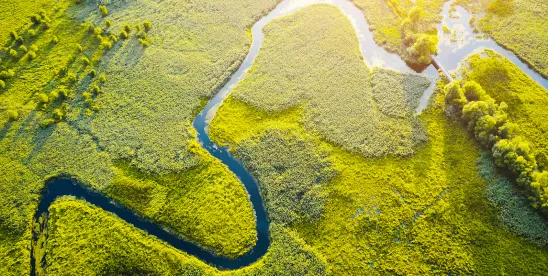On March 24, 2025, the U.S. Environmental Protection Agency (EPA) and the U.S. Army Corps of Engineers (together, the Agencies) announced plans to engage stakeholders in the Trump administration’s latest effort to pare back the definition of “waters of the United States” (WOTUS) under the Clean Water Act (CWA). The Agencies will hold a series of listening sessions in April and May on specific topics to gather perspectives on defining and regulating WOTUS. The Agencies will also accept written feedback submitted by April 23, 2025.
The definition of WOTUS establishes the scope of waters subject to federal jurisdiction under the CWA. After decades-long debate and litigation over the appropriate scope of WOTUS and multiple attempts to define the term through regulation, the U.S. Supreme Court’s decision in Sackett v. EPA, 598 U.S. 651 (2023), clarified the definition’s jurisdictional reach. The Court held that CWA jurisdiction extends to wetlands only if they have a continuous surface connection to relatively permanent bodies of water that are WOTUS in their own right. In response, the Agencies in 2023 amended their definition of WOTUS in an initial effort to conform with the decision. But many in the regulated community have argued that the 2023 regulatory amendment still does not narrow that definition enough to conform to Sackett. Due to ongoing litigation, the amended definition is currently enjoined in 26 states.
The Agencies’ planned engagement with stakeholders is part of the Trump administration’s wider effort to revise the definition of WOTUS consistent with the administration’s priorities and the Sackett decision. EPA announced the Agencies will revise the 2023 definition of WOTUS through the rulemaking process. On March 12, 2025, the Agencies published a joint memorandum issuing guidance to field staff on implementing the “continuous surface connection” requirement, and EPA additionally plans to provide guidance to states to ensure consistency in implementing WOTUS.
The Agencies will hold at least six listening sessions (online and in-person) for different groups, providing opportunities for stakeholders to advocate their perspectives on how the definition of WOTUS impacts them. Two sessions will be open to all stakeholders, one open to states, one open to Tribes, one open to industry and agricultural stakeholders, and one open to environmental and conservation groups. Those wishing to provide oral comments may do so on a first-come, first-serve basis. EPA will provide registration instructions and dates on its website. The Agencies do not plan to provide specific written responses to individual comments.
The Agencies have identified specific topic areas for feedback—including the scope of various terminology (e.g., “relatively permanent” and “continuous surface connection”) and recommendations for implementing the definition. As a result, this initiative will provide an important opportunity for interested parties to shape the future implementation of WOTUS.








 />i
/>i

